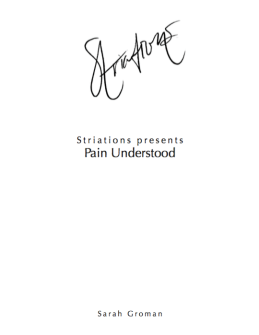The stretch between posts seems to grow longer and longer. For the world’s briefest update, I am 7 months away from completing my doctorate of physical therapy! The horizon is officially in view. Right now, we are half-way done with my clinicals/internships/rotations, whatever you would like to call them. My first was 8-week rotation was in an inpatient rehab settings at St. David’s North Austin Medical Center. I absolutely loved it. Most of my patient cases ended up being stuff that there was no way to prepare for in class, and it ended up being a full-body workout every other day due to the majority of my patients needed a lot of physical assistance in standing, walking, daily living activity practice, etc. That being said, I got to connect with some amazing personalities that came with my patients. Clinical site number two was 8 weeks at Symmetry PT, an outpatient orthopedic setting. I got to work with a myriad of different cases: post-operative knees, chronic pain, general conditioning, low back pain, post-concussion, chronic neck pain, the list goes on. Now I am wrapping up week 2/8 at 360 Balance, a specialty clinic that focuses on treatment of problems with the vestibular system, a.k.a. your inner ear. This system is TINY (I’m talking maybe half the size of a dime), and can wreak havoc when it comes to balance. Maybe you are familiar with the term “vertigo.” More on that in a later post.
For each clinical I have completed/planned to complete a “special project” of my choosing. For St. David’s I presented to the staff a lecture on utilizing gait speed as an outcome measure. For those unfamiliar, “gait” is your walking cycle. Studies are now finding strong correlations between how fast a person ambulates (walks), and, not only quality of life and independence, but longevity of life. In response to the presentation, my clinical instructor sought and was granted permission to install a measured pathway in one of the main hallways for other clinicians to use and to have consistent measurement between clinicians (how ’bout that for reliability?).
For Symmetry, I decided to put my undergraduate degree to use and draw a full comic that describes how a pain signal is generated.
For some general background, I started my own comic about three years ago that I titled “Striations” at the inspiration of my lost friend and mentor, Dr. Daniel Samples. He allowed me to find my own way of building the bridge between art and science. After his passing, my bridge crumbled, and I stopped creating for a long time. I would do an occasional small abstract something, but it was emotionally driven, not creatively driven. Every time I thought about starting another comic, my entire “right brain” would shut down; it was like a reflex. For this project, I was able to suppress the reflex.
Understanding the process of physical pain is something for which I have discovered a deep passion. It is an incredibly poorly understood concept, by the general population and clinicians alike. BUT that is changing. Because the research on all forms of physical pain is still working its way into the minds of those practicing and learning, there is not much time that is dedicated to it in the PT curriculum. Hence, a lot of what I have learned has been what I’ve sought on my own time. And after countless hours of research and reading and thinking and repeating…I have found even MORE passion to understand the nature of pain. Not only that, but I have found a passion for wanting people who experience it on all points of the spectrum to understand it. So what I decided to do as my “special project” for my second clinical at Symmetry was to start a work of comics that delve into the process of pain.
Let me say that the concept of pain is not an easy concept to grasp. The basic neuro-physiology is the easy part: it starts at point A (hand, foot, hip, elbow, etc.) with a stimulus, is relayed at point B, makes its way up to point C, then finishes at point D (in the brain). And that’s just acute pain (which is what this body of work starts with). What makes it so difficult to understand beyond that is that pain is not just a physical sensation, but it is entirely a mind-body/body-mind experience. With every painful experience, there are aspects physical, emotional, and psychological. Numerous centers of the brain are activated. There is not just one part of brain that is involved in experiencing pain. If there was, chronic pain might not be the epidemic that it currently is. For the first portion of my series, I’ve only started with the pathway of an acute painful stimulus. With all of that being said, I would like to present, to anyone who has taken the time to read this, Striations – Pain Understood: Parts 1 and 2. Leave comments or critiques. I hope you enjoy and understand 🙂

Pain Understood_Part 1 (click me first!)
~ Sarah
